-
 Bitcoin
Bitcoin $83,009.9241
0.10% -
 Ethereum
Ethereum $1,857.5607
1.81% -
 Tether USDt
Tether USDt $1.0000
0.01% -
 XRP
XRP $2.1129
0.92% -
 BNB
BNB $614.1058
2.33% -
 Solana
Solana $125.4322
-0.51% -
 USDC
USDC $1.0001
0.01% -
 Dogecoin
Dogecoin $0.1686
2.82% -
 Cardano
Cardano $0.6715
3.35% -
 TRON
TRON $0.2346
-0.33% -
 Toncoin
Toncoin $4.0460
1.26% -
 Chainlink
Chainlink $13.7924
2.86% -
 UNUS SED LEO
UNUS SED LEO $9.3060
2.39% -
 Stellar
Stellar $0.2699
1.08% -
 Avalanche
Avalanche $19.1120
1.62% -
 Sui
Sui $2.3837
5.61% -
 Shiba Inu
Shiba Inu $0.0...01268
3.39% -
 Hedera
Hedera $0.1685
3.45% -
 Polkadot
Polkadot $4.1572
3.12% -
 Litecoin
Litecoin $84.0307
2.26% -
 MANTRA
MANTRA $6.2377
-1.12% -
 Bitcoin Cash
Bitcoin Cash $307.8861
2.49% -
 Bitget Token
Bitget Token $4.5268
0.93% -
 Dai
Dai $0.9998
-0.01% -
 Ethena USDe
Ethena USDe $0.9997
-0.02% -
 Pi
Pi $0.7032
0.23% -
 Hyperliquid
Hyperliquid $13.1614
3.37% -
 Monero
Monero $216.8544
0.15% -
 Uniswap
Uniswap $6.0878
2.28% -
 Aptos
Aptos $5.2977
-0.73%
Why did the mining machine's computing power suddenly drop?
Sudden mining machine hashrate drops can result from overheating, power issues, hardware failures, software glitches, or network problems; regular maintenance helps prevent them.
Mar 30, 2025 at 11:21 pm
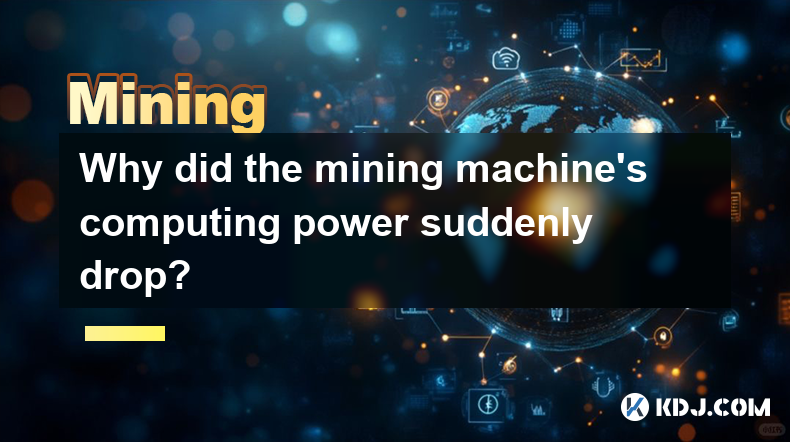
Investigating Sudden Drops in Mining Machine Hashrate
A sudden drop in a cryptocurrency mining machine's computing power, often referred to as hashrate, can be incredibly frustrating and potentially costly. Several factors can contribute to this issue, ranging from simple troubleshooting steps to more serious hardware problems. Understanding the potential causes is crucial for swift remediation.
One of the most common reasons is overheating. Mining machines generate significant heat, and if the cooling system isn't functioning correctly, components can overheat and throttle their performance to prevent damage. This results in an immediate drop in hashrate. Check your fans, ensure adequate airflow, and monitor temperatures using monitoring software. Dust buildup can also significantly impede cooling.
Another frequent culprit is power supply issues. Mining machines are power-hungry devices. Insufficient power, fluctuating voltage, or a failing power supply unit (PSU) can cause the machine to downclock or shut down entirely, leading to a drastic hashrate reduction. Check your power cables, ensure the PSU is delivering sufficient wattage, and consider using a UPS for power stability.
Hardware failures are also a possibility. This could involve issues with the GPU (Graphics Processing Unit), ASIC (Application-Specific Integrated Circuit), or other components within the mining rig. A failing GPU, for instance, might exhibit reduced performance before completely failing. Regular monitoring and stress testing can help identify potential hardware problems early on.
Software glitches can also impact hashrate. Outdated or corrupted mining software, driver issues, or operating system problems can all lead to performance drops. Ensure you are using the latest versions of your mining software and drivers. A clean operating system installation can sometimes resolve software-related issues.
Network connectivity problems can also be a factor. If the mining machine loses its connection to the mining pool, its hashrate will effectively drop to zero. Check your internet connection and ensure the mining software is properly configured to connect to the chosen pool. Network instability can lead to intermittent drops in hashrate.
Finally, mining difficulty adjustments on the blockchain can indirectly affect the perceived hashrate. While your machine's actual performance may not change, the difficulty increase means you'll solve fewer blocks, resulting in a lower contribution to the network's overall hashrate. This isn't a problem with your machine itself, but a factor affecting your profitability.
Troubleshooting Steps for Low Hashrate
If you're experiencing a sudden drop in your mining machine's hashrate, here's a step-by-step troubleshooting guide:
- Check Temperatures: Monitor the temperatures of your GPUs, ASICs, and other components. High temperatures indicate a cooling problem.
- Inspect Power Supply: Ensure your power supply is delivering adequate power and that all connections are secure.
- Verify Network Connectivity: Check your internet connection and the mining software's connection to the pool.
- Update Software and Drivers: Make sure you're using the latest versions of your mining software and graphics drivers.
- Examine Logs: Review the mining software logs for error messages or warnings.
- Perform Hardware Diagnostics: Run diagnostic tests on your GPUs and other components to identify potential hardware failures.
- Clean the Machine: Dust buildup can significantly impact cooling efficiency. Clean the machine thoroughly.
Understanding Mining Pool Dynamics
Your perceived contribution to the overall network hashrate, as seen on your mining pool dashboard, can fluctuate due to various factors beyond your control. These include:
- Pool Luck: The randomness inherent in block mining means some pools experience periods of higher or lower than average luck in finding blocks. This affects the rewards you receive but not necessarily your machine's actual hashrate.
- Pool Size: Larger pools tend to have more consistent payouts, as the probability of finding blocks is higher.
- Network Difficulty: As mentioned before, increased network difficulty means it takes more computational power to solve a block, resulting in fewer blocks solved and lower rewards despite consistent hashrate.
Frequently Asked Questions
Q: My mining machine's hashrate dropped suddenly. What's the first thing I should check?
A: The first thing to check is the temperature of your GPUs and other components. Overheating is a very common cause of hashrate drops. Check your cooling system's functionality.
Q: My power supply seems fine, but my hashrate is still low. What else could be wrong?
A: Even with a seemingly functional power supply, there might be issues with power delivery to specific components. Check all power connections and consider running diagnostics on your GPUs and other hardware components. Software issues, like outdated drivers, should also be investigated.
Q: I've updated my drivers and software, but the hashrate is still low. What should I do?
A: If software updates don't resolve the issue, consider hardware problems. Run diagnostic tests on your GPUs and other components to check for failures. A failing GPU is a common culprit for reduced hashrate.
Q: My hashrate fluctuates constantly. Is this normal?
A: Some minor fluctuation is normal, but significant and frequent drops are not. Check your cooling, power supply, and network connection for potential issues. Also, monitor your mining pool's luck and the network difficulty, as these factors can affect your perceived hashrate.
Q: How can I prevent future hashrate drops?
A: Regular maintenance is key. Keep your mining machine clean, monitor temperatures closely, ensure adequate power supply, update software and drivers regularly, and perform periodic hardware diagnostics. This proactive approach can help prevent many potential problems.
Disclaimer:info@kdj.com
The information provided is not trading advice. kdj.com does not assume any responsibility for any investments made based on the information provided in this article. Cryptocurrencies are highly volatile and it is highly recommended that you invest with caution after thorough research!
If you believe that the content used on this website infringes your copyright, please contact us immediately (info@kdj.com) and we will delete it promptly.
- Expect “Strong Bullish Rally” for SUI if This Key Resistance Breaks: Top Analyst
- 2025-04-01 23:15:11
- MIND of Pepe (MIND) Emerges as a Contender in the Meme Coin Arena, Aiming to Outperform Dogecoin (DOGE) and Pepe (PEPE)
- 2025-04-01 23:15:11
- WAIB Summit Monaco 2025, the First and Largest Web3 Event in Europe
- 2025-04-01 23:10:12
- 5 Best Altcoins to Buy Now as Bitcoin (BTC) Market Cycle Enters a New Phase
- 2025-04-01 23:10:12
- Rexas Finance Surpasses Shiba Inu – Real-World Assets Drive Investor Confidence!
- 2025-04-01 23:05:12
- Kernel DAO (KERNEL) is a Revolutionary Restaking Protocol Operating on the BNB Chain
- 2025-04-01 23:05:12
Related knowledge
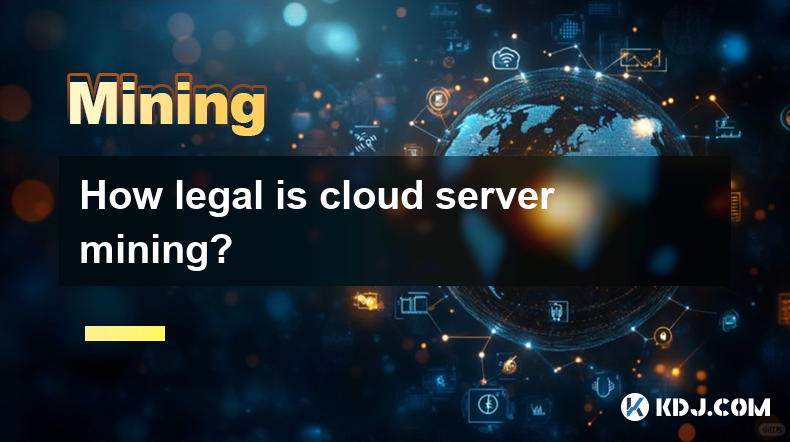
How legal is cloud server mining?
Apr 01,2025 at 08:08am
Cloud server mining has become an increasingly popular method for individuals and companies to participate in cryptocurrency mining without the need for expensive hardware and high electricity costs. However, the legality of cloud server mining can be a complex issue, as it varies by jurisdiction and depends on several factors. This article will explore...
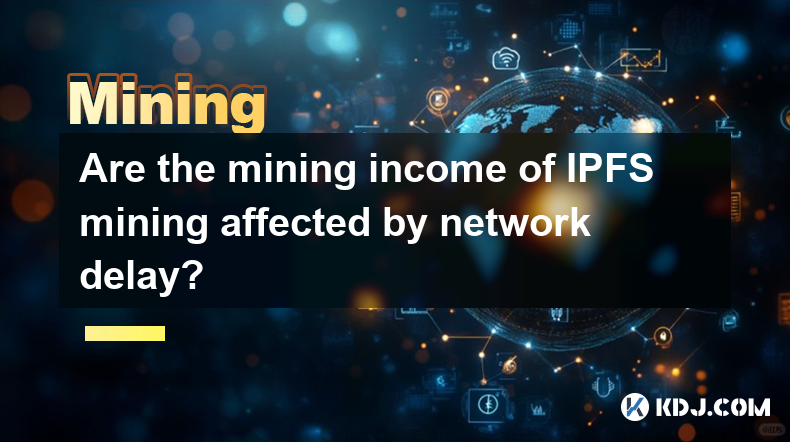
Are the mining income of IPFS mining affected by network delay?
Apr 01,2025 at 09:36pm
Are the Mining Incomes of IPFS Mining Affected by Network Delay? Understanding IPFS Mining and Network Delay's ImpactIPFS (InterPlanetary File System) mining, unlike Bitcoin mining, doesn't involve solving complex cryptographic puzzles. Instead, it focuses on providing storage and bandwidth to the network. Miners earn rewards for storing and sharing dat...
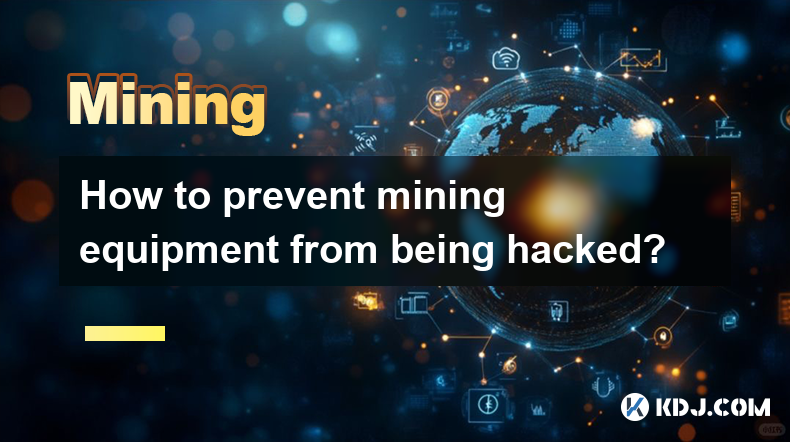
How to prevent mining equipment from being hacked?
Apr 01,2025 at 06:22am
Understanding the ThreatsCryptocurrency mining, while potentially lucrative, exposes your equipment to various cyber threats. These threats range from simple malware infections that steal your mining profits to sophisticated attacks that hijack your entire operation. Understanding these threats is the first step in effective protection. This includes r...
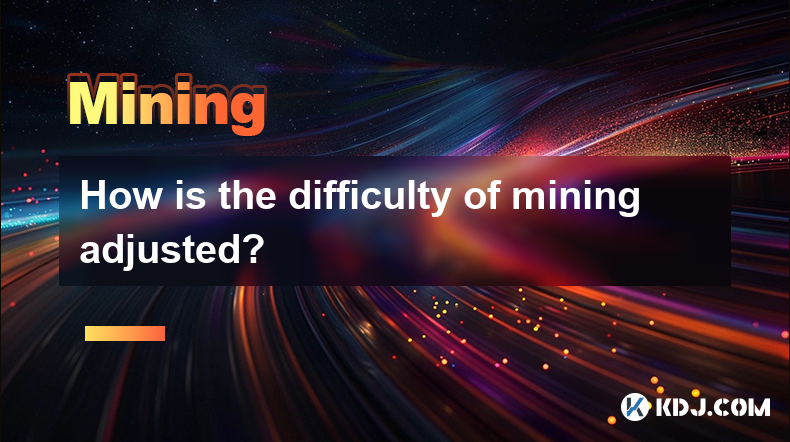
How is the difficulty of mining adjusted?
Apr 01,2025 at 07:14am
Understanding Bitcoin's Difficulty Adjustment MechanismBitcoin's mining difficulty is a crucial element ensuring the network's stability and security. It dynamically adjusts to maintain a consistent block generation time, approximately every 10 minutes. This adjustment prevents miners with overwhelming computing power from monopolizing block creation a...

How to purchase mining equipment for FIL mining?
Apr 01,2025 at 09:49pm
Understanding FIL Mining Hardware RequirementsFilecoin (FIL) mining, unlike Bitcoin mining, doesn't rely on ASICs (Application-Specific Integrated Circuits). Instead, it utilizes storage-based mining, requiring powerful storage hardware and a robust network connection. This means you'll need to invest in storage servers, often referred to as storage no...
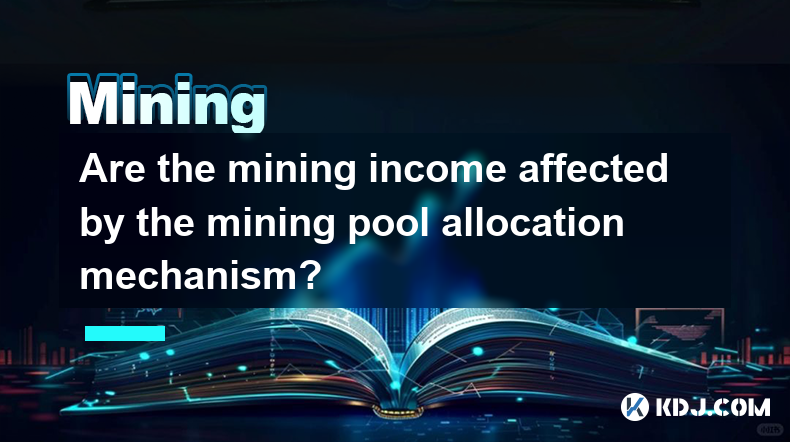
Are the mining income affected by the mining pool allocation mechanism?
Mar 31,2025 at 05:49pm
Understanding Mining Pool Allocation MechanismsMining pools aggregate the hashing power of many miners to increase the chances of successfully mining a block. The reward for successfully mining a block is then distributed among the pool's participants based on their contribution – usually measured in shares submitted. The allocation mechanism determine...

How legal is cloud server mining?
Apr 01,2025 at 08:08am
Cloud server mining has become an increasingly popular method for individuals and companies to participate in cryptocurrency mining without the need for expensive hardware and high electricity costs. However, the legality of cloud server mining can be a complex issue, as it varies by jurisdiction and depends on several factors. This article will explore...

Are the mining income of IPFS mining affected by network delay?
Apr 01,2025 at 09:36pm
Are the Mining Incomes of IPFS Mining Affected by Network Delay? Understanding IPFS Mining and Network Delay's ImpactIPFS (InterPlanetary File System) mining, unlike Bitcoin mining, doesn't involve solving complex cryptographic puzzles. Instead, it focuses on providing storage and bandwidth to the network. Miners earn rewards for storing and sharing dat...

How to prevent mining equipment from being hacked?
Apr 01,2025 at 06:22am
Understanding the ThreatsCryptocurrency mining, while potentially lucrative, exposes your equipment to various cyber threats. These threats range from simple malware infections that steal your mining profits to sophisticated attacks that hijack your entire operation. Understanding these threats is the first step in effective protection. This includes r...

How is the difficulty of mining adjusted?
Apr 01,2025 at 07:14am
Understanding Bitcoin's Difficulty Adjustment MechanismBitcoin's mining difficulty is a crucial element ensuring the network's stability and security. It dynamically adjusts to maintain a consistent block generation time, approximately every 10 minutes. This adjustment prevents miners with overwhelming computing power from monopolizing block creation a...

How to purchase mining equipment for FIL mining?
Apr 01,2025 at 09:49pm
Understanding FIL Mining Hardware RequirementsFilecoin (FIL) mining, unlike Bitcoin mining, doesn't rely on ASICs (Application-Specific Integrated Circuits). Instead, it utilizes storage-based mining, requiring powerful storage hardware and a robust network connection. This means you'll need to invest in storage servers, often referred to as storage no...

Are the mining income affected by the mining pool allocation mechanism?
Mar 31,2025 at 05:49pm
Understanding Mining Pool Allocation MechanismsMining pools aggregate the hashing power of many miners to increase the chances of successfully mining a block. The reward for successfully mining a block is then distributed among the pool's participants based on their contribution – usually measured in shares submitted. The allocation mechanism determine...
See all articles























































































